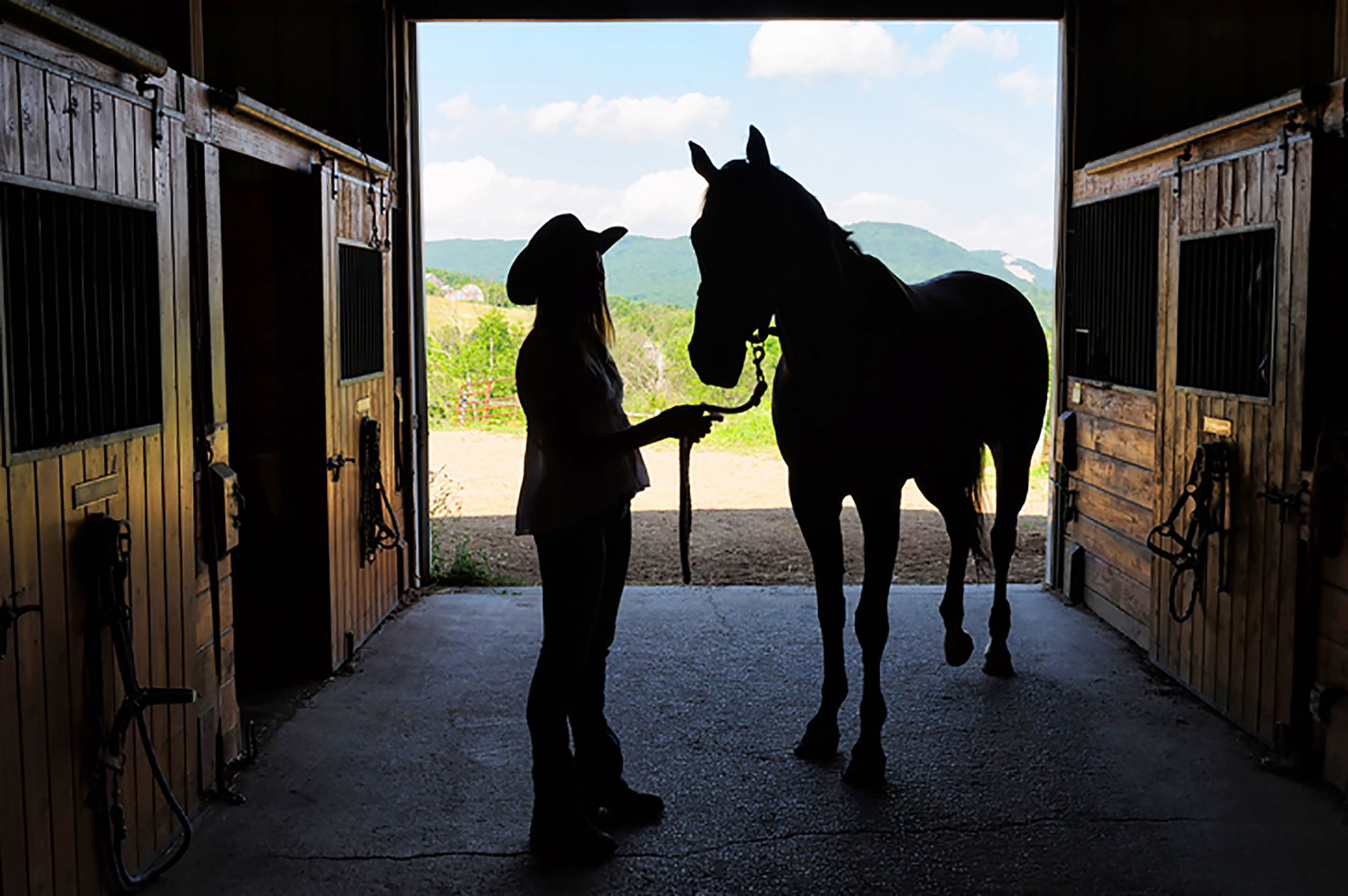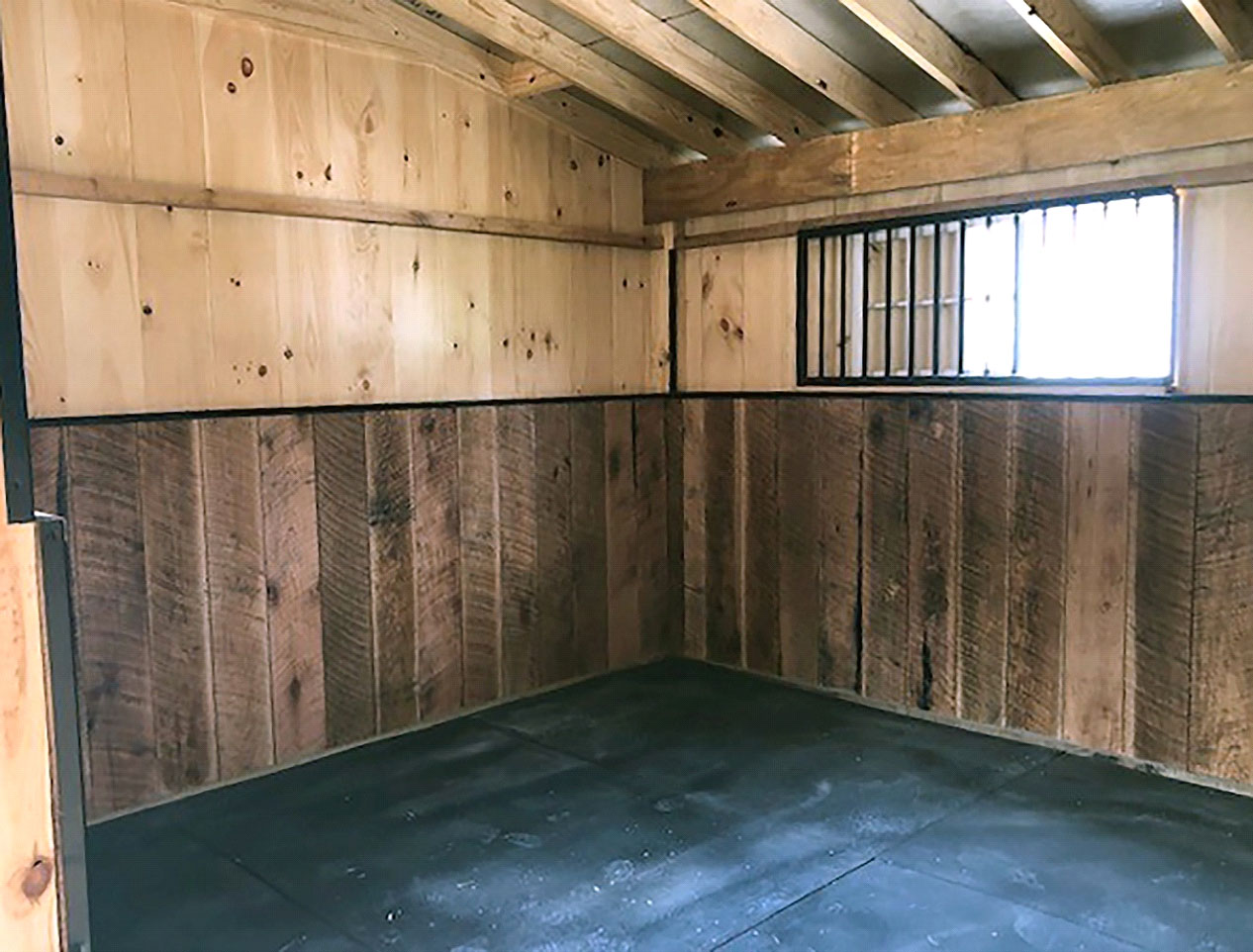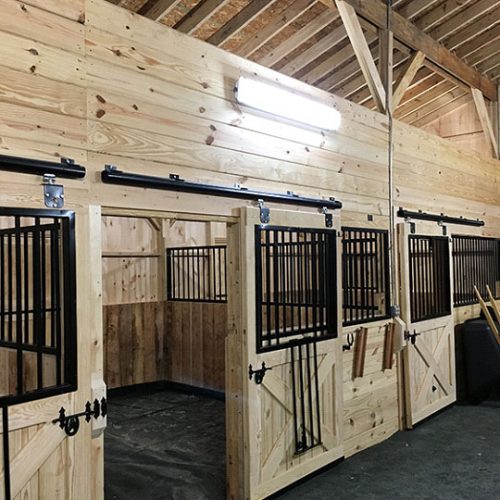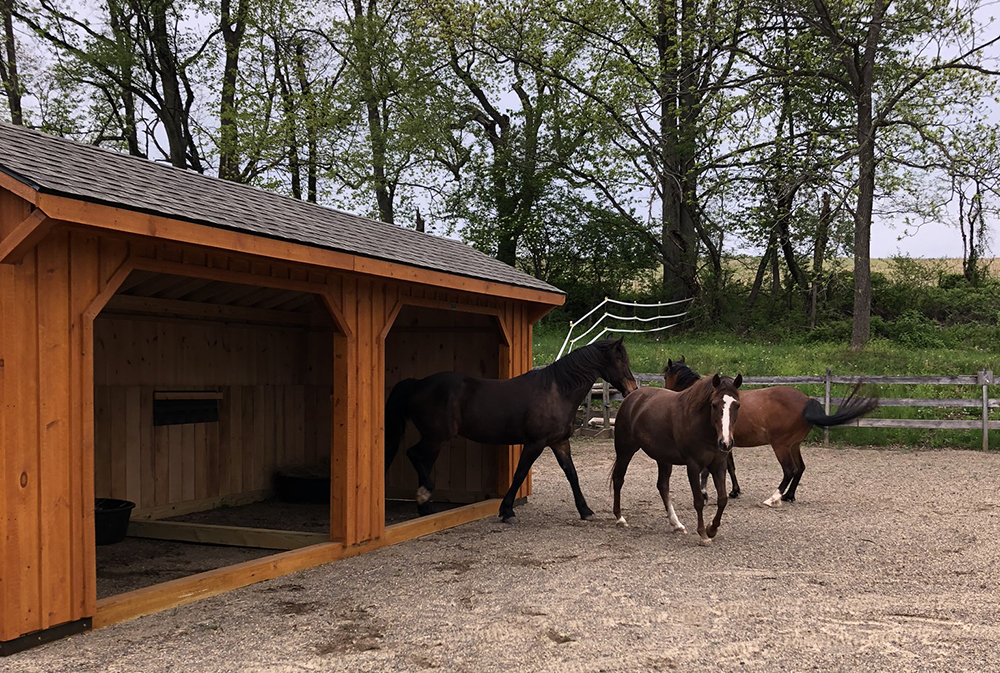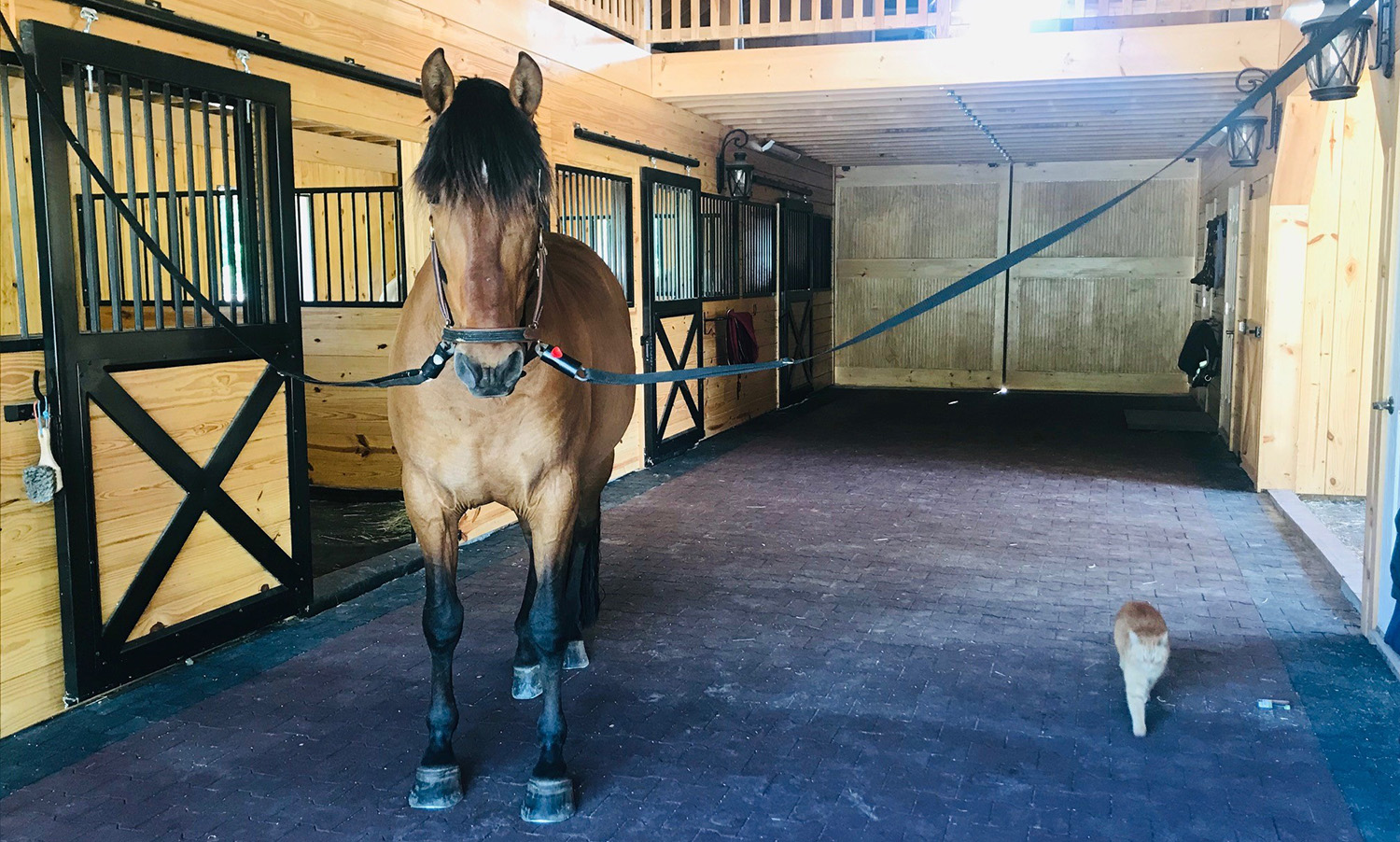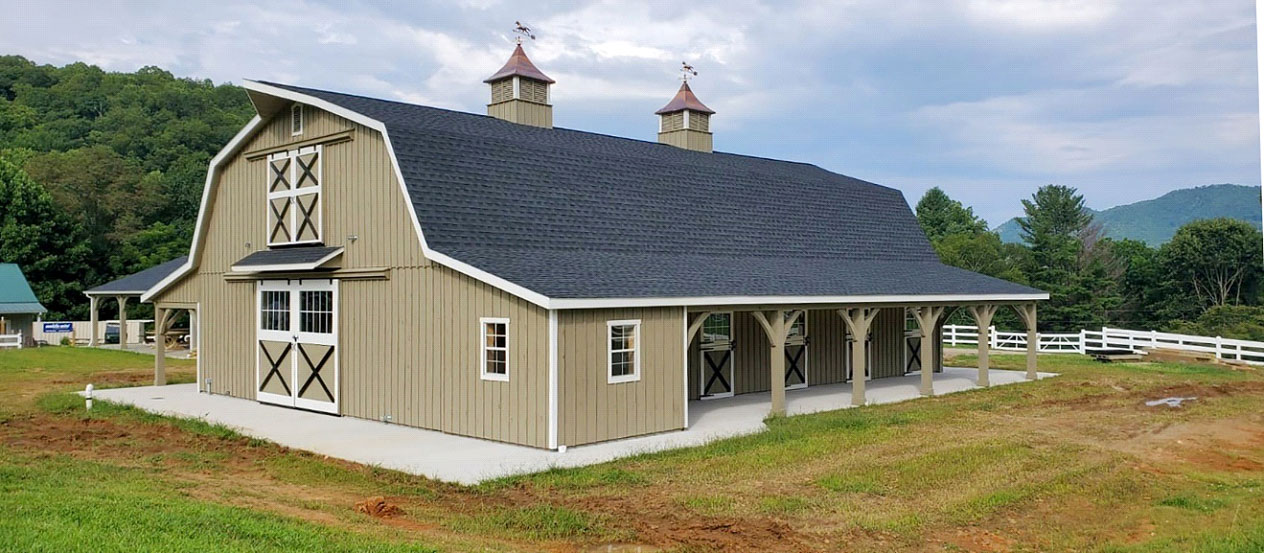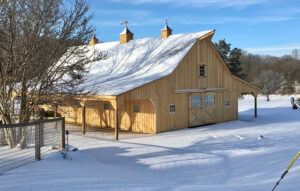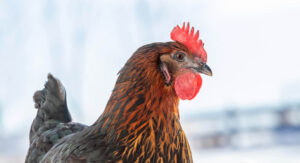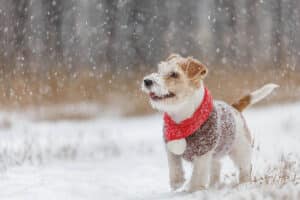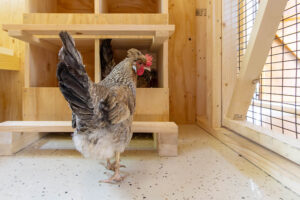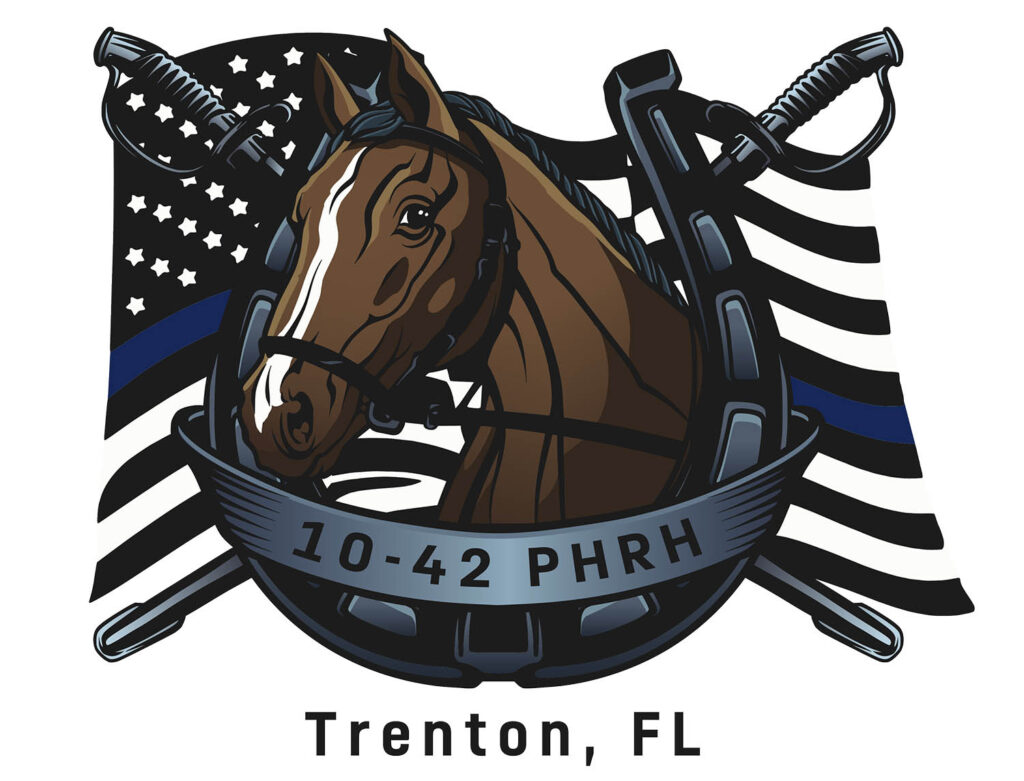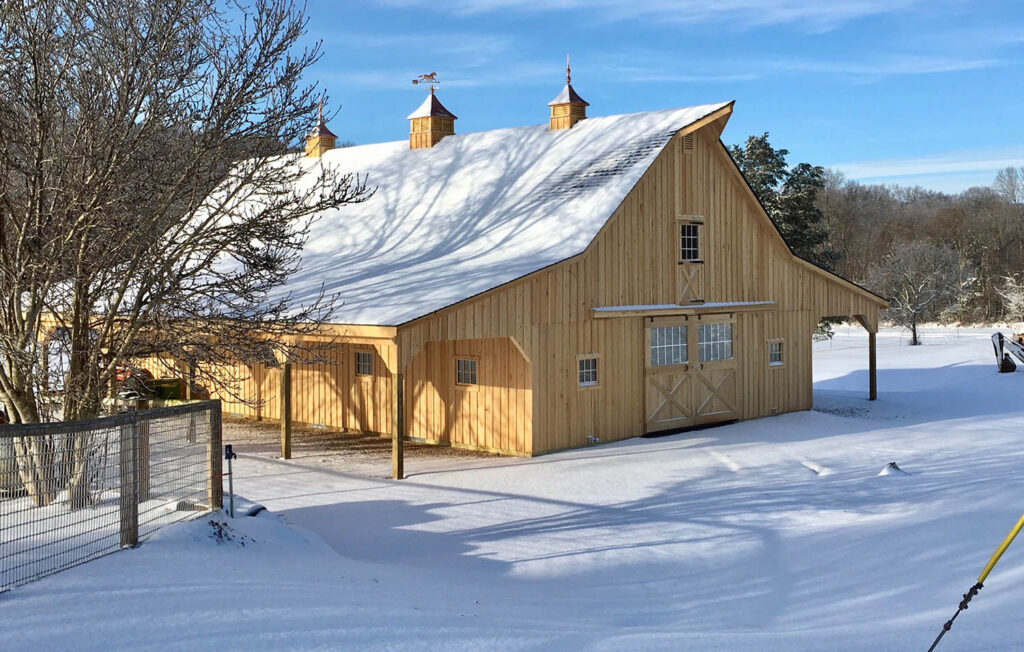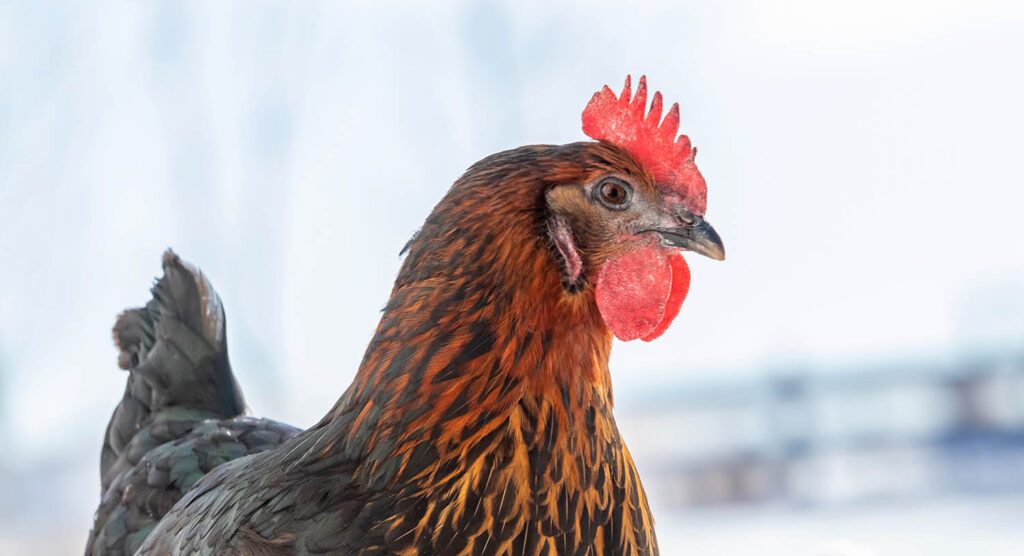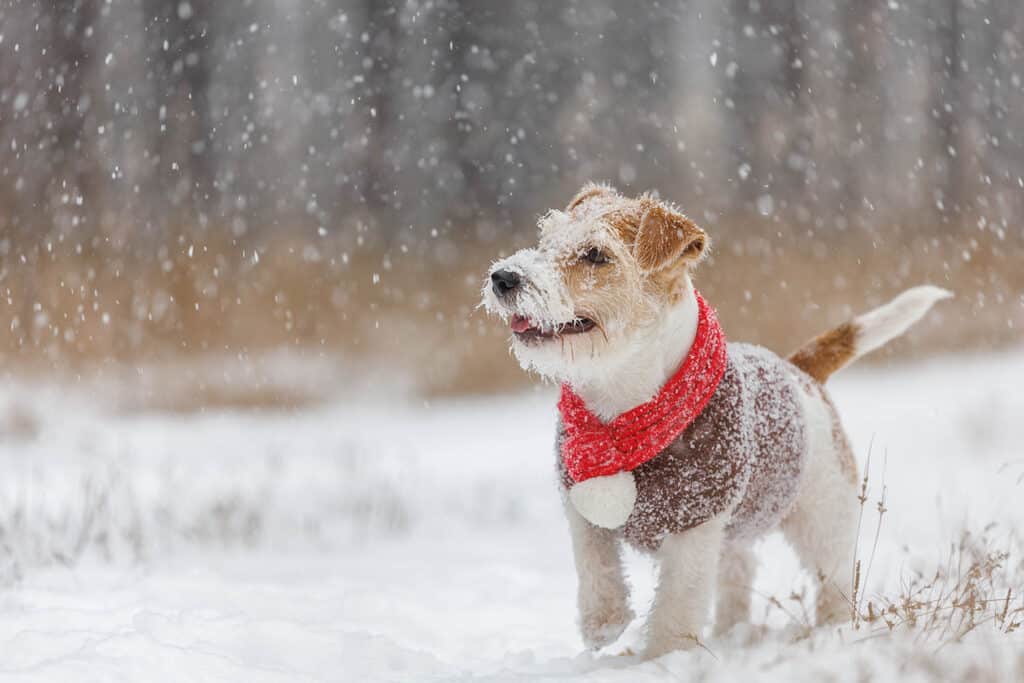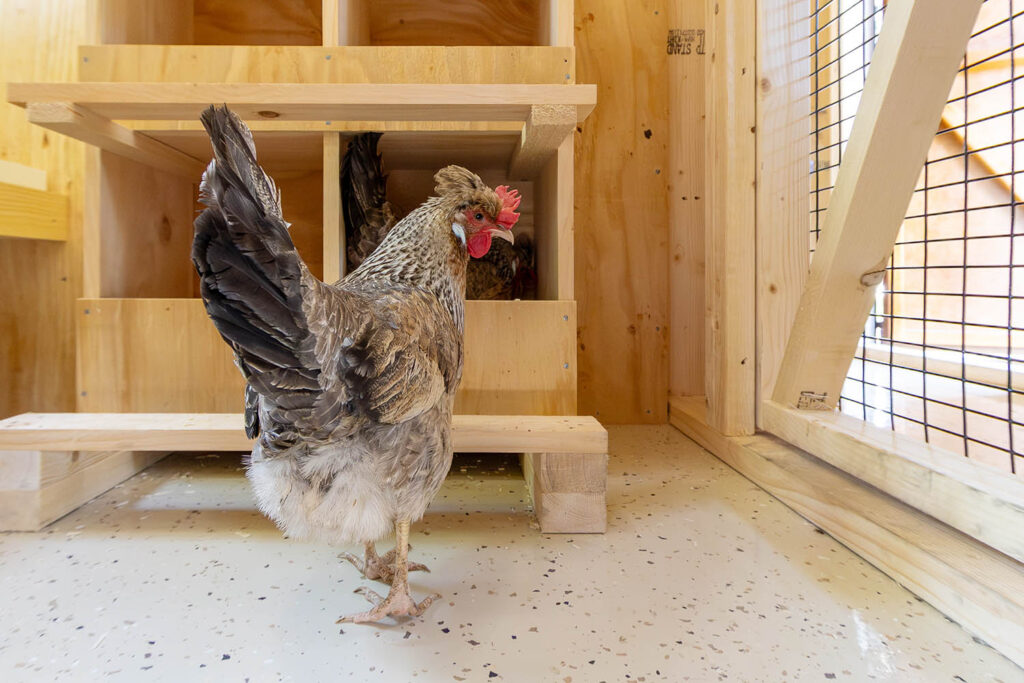Horse barn designs vary greatly but one thing they all have in common is the need to be functional and safe for both horses and their handlers.
Horses have a habit of hurting themselves even with the most carefully planned and constructed environments for their care but if you start out with flawed design in your horse barn you are substantially increasing the chances of spending more money on the vet than you might have anticipated. Sadly, not all injuries a horse or human sustains can be 100% successfully resolved, so safety in design is not something to be taken lightly.
If you are planning a new horse barn build here are a few design disasters you’ll want to avoid.
Smelly Stalls & Dodgy Walls
Respiratory health in horses can be compromised by the lack of a well-ventilated environment free of ammonia odors and stale air. Even with the best passive ventilation systems such as open soffits, gable vents, ridge vents and windows, bad air can linger in the barn.
Smelly stalls that cannot be efficiently cleaned due to dirt floors and lack of drainage for hosing down and deep cleaning provide the caregiver limited options for doing a good job.
At a minimum consider preparing a level barn site with a gravel base and add a compacted stone dust layer on top. If you can afford it install a concrete base with drains in each stall, covered with rubber mats for the comfort of the horse as an easy deep clean solution. Concrete can also be added after the main build is complete if you need to spread the expense of construction over time.
Smells and dampness in stalls can also come from poor drainage around the barn. Stalls that flood periodically during heavy rains, or seasonally when the snow off the roof that has accumulated along the side of the barn in cold weather melts down as temperatures rise, can cause musty smelling floors and offer an opportunity for fungal and bacterial growth.
The addition of a French drain around the barn and/or sloping the apron of the building away from the walls can help. Ask a site contractor for advice. Soil types, site management of surrounding terrain such as hills, will all need to be considered to choose the best option for both the initial barn site and drainage needs.
Dodgy walls are an accident waiting to happen. Not all horses get along so infighting between stall occupants can quickly escalate into kicking and rearing and horses jumping up to reach each other nose to nose at the top of a dividing stall wall. A horse that becomes cast against a wall is also capable of taking down a dodgy wall, adding to a calamitous situation.
During my horse breeding career I have spent significant time working with young horses and I can attest to their abilities to do damage even when you think you have constructed a barn to be tough enough to handle their antics. One morning I was stunned to find a solid 2” x 12” dimensional lumber wall that was 10 feet tall, smashed to the ground and the two young geldings looking sheepishly at each other still in their respective boxes. The wall was well secured (or so I thought), but after this incident I nailed additional 1”x 1” wood firmly to each corner on each side of the partition walls in every stall, in addition to the metal channels that secured the boards to the exterior and front stall walls.
Other walls to worry about are the front stall walls. Open design front walls look attractive and can be beneficial for airflow throughout the barn. However, even the sanest horse can decide to jump out and walking in the barn to find your horse didn’t quite clear the door or wall and is lodged with his stifles hooked over the front wall is a sight no horse owner wants to see.
Aisleways Not Alleys
It’s important to know that horses do not see the same way we do. Their eyesight is very different and one component to consider is that when going from a bright light into a darker space or shadow, the horse can take 50 minutes to adjust his eyesight to be able to make out his environment.
Consider for instance, the hunter/jumper horse that goes from schooling outside on a sunny day to compete in an indoor ring that is not well illuminated. His vision will not adjust to see fences with clarity right away. This is why it is important to ‘collect’ outside the ring but inside the building before your turn comes, whether you are competing in hunter/jumpers or racing barrels.
As you enter the barn when you bring a horse in from the paddock, his vision will not adjust fast enough for him to immediately see where he is going. Aisleways should be wide enough for the caregiver to lead the horse safely and kept free of any obstacles or obstructions such as chairs and tack trunks that limit access.
Horses do not like to enter confining dark alleys.
Narrow Doors & Tiny Stalls
A stall door should be at least 4’ wide otherwise there is likelihood the horse will hit his hip on the doorframe during passage in and out of the stall. Narrow doors are also a great method to damage blankets as the horse brushes against the frame.
If more than one horse is sharing a space such as a run-in shed, the entrance should be 10’ wide or more, and make the shed wider rather than deeper so the horses can escape from each other during arguments.
Tiny stalls provide a recipe for injury for horses becoming cast in the stall and limit the daily movement of the horse within the space, which can cause mental and physical stress. Build the stalls at least 10’ square, or larger for bigger breeds.
Consult a barn buying guide to help determine the perfect horse barn design for your needs.
Nibble. Nibble. Chew. Chew.
A student of mine built a beautiful 10-stall barn and proudly invited me to tour its wonderful fresh smelling wood interior. The construction was faultless aside from one glaring omission. The top of the 4’ high kickboard walls, windowsills and tops of the doors were all unprotected from the nibble, nibble, chew, chew of horses as there were no metal strips added to deter equine occupants from their inevitable delight in investigating the fresh wood. I hesitated to mention it, but I didn’t want to see damage done to the lovely barn so I suggested it be added before horses moved in.
Sadly, my advice went unheeded, and when I returned to the barn a month later one of the doors was chewed down over 1’ in its center and other areas had been nibbled on in various degrees. Frankly, the contractor should have suggested the metal additions but as it was not a horse barn construction expert they probably didn’t know.
The Evil of Low Ceilings
Low ceilings in barns not only limit airflow and thus impede good ventilation throughout the structure, they can also cause a painful condition in horses called Poll Evil. Poll Evil is a septic bursitis of the cranial nuchal bursa at the top of the head of the horse that can be caused by infection or by an injury such as a blow to the head or neck.
Low ceilings also limit light and create a dark interior that requires more expense to illuminate.
Where’s The Light
It’s common though not particularly useful to run electric lights down the center of an aisleway. This placement of lights will cause shadows. When a horse is cross-tied in the aisle, it will be difficult to see much of his body except for the top of his back.
Lights installed on each side of the aisle do a much better job of providing the light needed to see properly to pick hooves and work on the side and underside of the horse.
Power Up
While it is tempting to skip the expense of adding electric outlets as well as light fixtures to your barn’s interior, it is prudent to think again.
No electric outlets means no fans, vacuums, vet equipment, bucket heaters, power washers etc. can be used in the barn without dragging extensions around from the house or other power source. These extensions are trip hazards and can become damaged by shod hooves or equipment and can represent a fire hazard.
Placement of a GFCI (ground fault circuit interruptor) waterproof electrical outlet by each stall safely out of the horse’s reach with all wires encased in conduit to protect them from rodent damage, nicks and tears will add safety and function to the barn. Consult a licensed electrician about the various options.
In conclusion, barn design truly matters and form and function need to be addressed. Make sure when you hire a contractor that you address these issues to ensure they know how to build a functional barn. Check out an experienced barn building company and consult with their experts and don’t be shy to ask lots of questions. In today’s world there are many options and solutions for limited budgets, and a good barn that is well designed will offer many years of great service.


